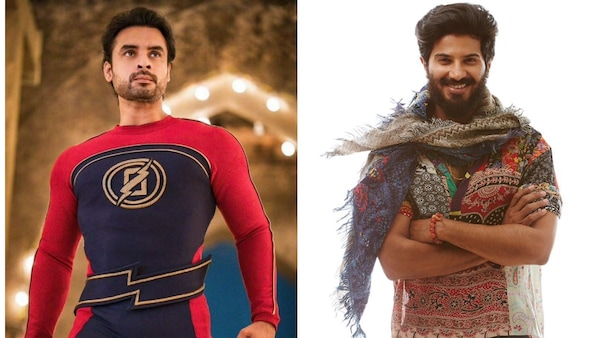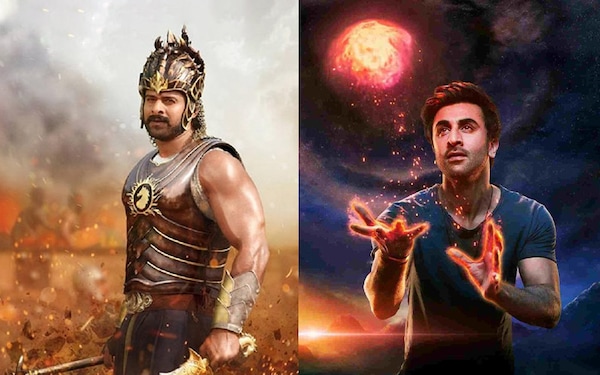From Krrish to Minnal Murali, Bringing Fantasy to Life with VFX

- Rhea Candy
Film Companion
Last Updated: 11.47 AM, Sep 17, 2022

Remember the thunderous beauty of N. T. Rama Rao Jr. leaping out of a swerving truck along with hordes of ferocious animals in RRR (2022)? The shimmering lights of the party he is gatecrashing twinkle in the eye of a growling tiger before the animal mauls down mortal throats. That’s all visual effects (VFX). You’ll glimpse some amount of VFX in almost every movie today, but it is perhaps at its most inventive, rich and cinematic in films that peddle pure fantasy. From adding scale to Sanjay Leela Bhansali’s opulent palaces, spinning grotesque magic around horror films like Tumbbad to granting superpowers to mundu-wearing heroes such as in Minnal Murali (2021), VFX has grown to become the very foundation of fantasy films.
“I don’t see VFX artists not being involved from the inception of a fantastical project – unless it is a “fix-it-in-post” kind of a scenario. It would be impossible for a producer or filmmaker to even attempt [a fantasy film with unreal elements] before having VFX teams involved at an early stage,” says Viral Thakkar, the Creative Head at ReDefine, who recently worked as the VFX supervisor for Brahmastra (2022). Instead of a top-down approach where directors instruct the VFX team about the kind of effects they need in a film, sequences of fantasy are often a fruit of collaboration between the filmmaker and the artists – an effort that begins during the stage of scripting itself.
Thakkar, who worked on around 20% of the visual effects for the Rs. 300-crore blockbuster Krrish (2013) was heavily involved in the designing of the film’s technological concepts and the main superhero character. “The antagonist Kaal’s underground lab, his creatures with long tongues and another sequence of these green fumes of virus spreading through a room were all conceptualised during the scripting stage,” said Thakkar, lauding director Rakesh Roshan’s courage to employ such heavy CGI almost a decade ago. Unlike a photo-real film, which has its own challenges in terms of visual effects, fantasy films depend on visual effects to build a convincing world, the very fibre that houses its narrative. When talking about Brahmastra (2022), VFX firm DNEG’s CEO Namit Malhotra mentioned how having no real reference for bringing the film’s vision to life was their biggest challenge.

Counterintuitively, it is often an impression of realism that grounds the boundless possibilities of technology. “Blending real-world scenarios with a fantasy world is what struck a chord with me when I first watched Avatar (2009),” said Thakkar. The fact that the audience is more accepting of VFX-heavy films, thanks to the OTT boom and our exposure to various genres, poses a more nuanced obstacle. “The audience now knows and accepts that [what they’re seeing on-screen] is all visual effects. So, if it’s not treated well – the aesthetics are not right or the colours don’t make sense then it’s like, ‘What the hell is happening?’” said Thakkar. In a world where almost anything can be created digitally, VFX artists find themselves delivering more convincing results when they restrict themselves to worlds that aren’t too unfamiliar and jarring. This includes rendering accurate physics and anatomy to a visual product, while also accounting for its emotion if it’s a live model. This blurring of real and imaginary concepts also makes space for the political, societal and psychological tension that forms the crux of a film’s commentary. Take, for instance, the Malayalam film Minnal Murali which, at a glance, is like any other superhero film. But on closer inspection, it reveals much about the workings of society and turns many superhero tropes on their head. Director Basil Joseph used VFX for his characters’ superhuman abilities and made sure that the superpowers act as a contrast to the hyperreal small town that seemed stuck in the Nineties. The merging of the real and unreal reflects the mania of a mental breakdown and pins the film’s narrative to the timeless theme of good versus evil.

Compared to the South’s comfort in seamlessly blending mythology with fantasy, Bollywood has seen only a handful of films that revel in the whimsical and imaginative. Despite some clever sequences of VFX in realistic films – like the protagonist’s final fall in Aankhon Dekhi or Sanjay Dutt’s hallucinatory drug trip in Sanju – it’s rare to see Hindi films incorporate visual effects to their optimum. Does the future look any brighter? A VFX professional with extensive experience in the Hindi film industry said that while there is a booming market for fantasy films in India – the success of RRR and the Baahubali series proves this – the genre will only see growth if Indian studios invest in it. Meanwhile, Hollywood studios, which need a steady supply of visual effects artists, may well absorb a chunk of India’s VFX talent.
Thakkar agrees. fantasy films require a lot of time, money, courage and discipline. He cited director Ayan Mukherji’s 10-year commitment to Brahmastra as one of the reasons Malhotra’s Prime Focus backed the film as a producer. Visual effects, while in demand, are extremely expensive and require meticulous planning ahead of time – a concept that is still alien to Bollywood. “On one hand, ReDefine works with international clients who really respect the department; they understand the time and patience required for VFX. It requires involvement: There isn’t a magic wand that can have something ready the next day – this usually happens with our filmmakers here. Although, of course, we do have directors who truly understand the department’s workings,” says Thakkar.
While the investment does pose a challenge, professionals are positive that we’ll continue to see fantastical films and more polished VFX, even if it’s only in a handful of releases a year. SS Rajamouli’s magic notwithstanding, the industry has come a long way in the way it views newer technologies. A VFX studio head with over two decades of experience recalled how there was a time when VFX artists would simply sit on sets because they weren’t entertained by the powers that be. Thakkar believes that as long as VFX teams converse with filmmakers and educate them about the latest advancements, we’ll keep seeing novel execution of ideas. If a mega-producer like Karan Johar can get behind a large-scale fantasy film, surely things must be looking up.
